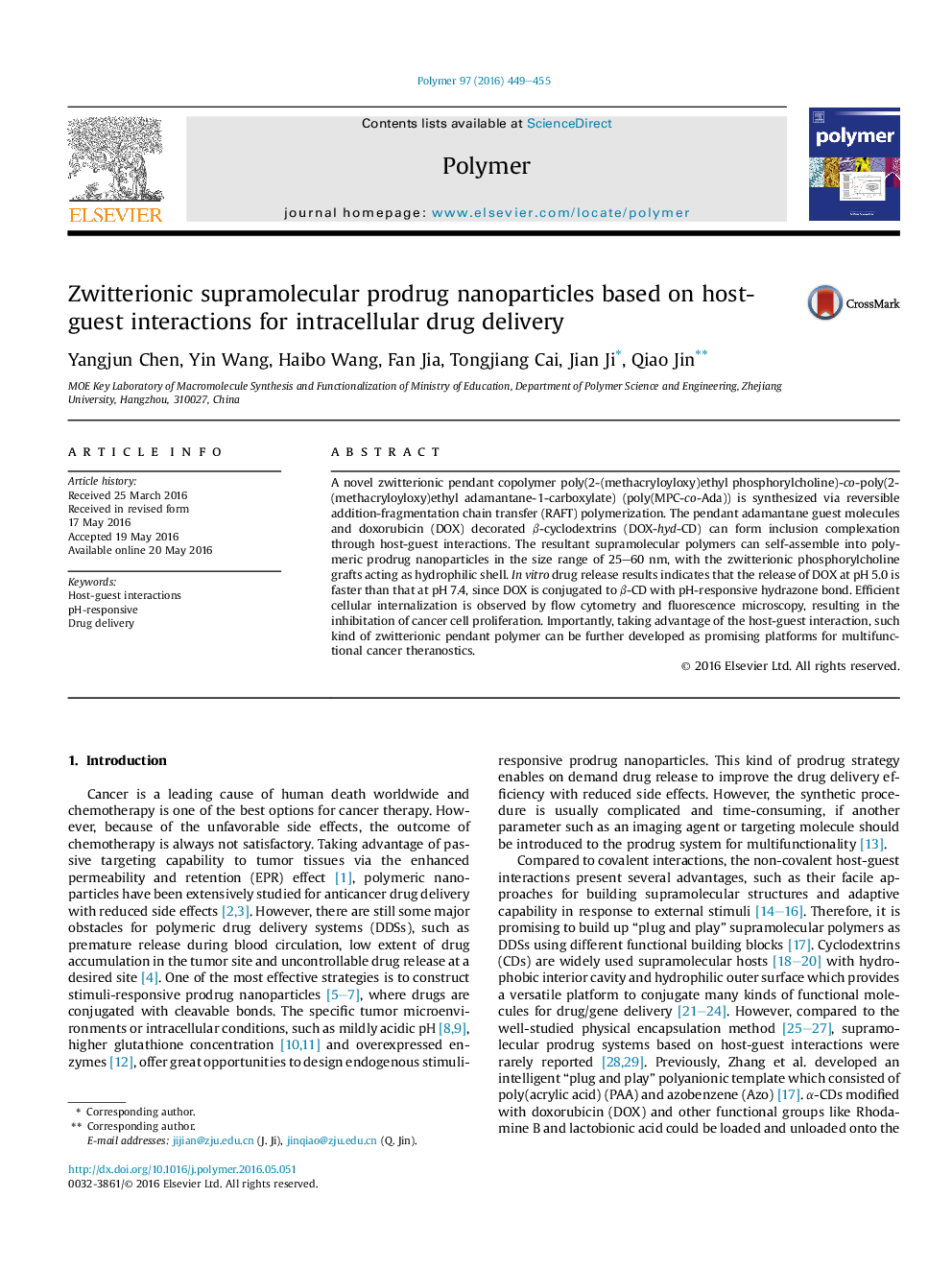| Article ID | Journal | Published Year | Pages | File Type |
|---|---|---|---|---|
| 5179259 | Polymer | 2016 | 7 Pages |
â¢The prodrug nanoparticles are formed based on host-guest interactions.â¢The prodrug nanoparticles possess zwitterionic phosphorylcholine surface.â¢The prodrug nanoparticles exhibit pH-responsive drug release profile.â¢The prodrug nanoparticles can efficiently delivery DOX into cancer cells.
A novel zwitterionic pendant copolymer poly(2-(methacryloyloxy)ethyl phosphorylcholine)-co-poly(2-(methacryloyloxy)ethyl adamantane-1-carboxylate) (poly(MPC-co-Ada)) is synthesized via reversible addition-fragmentation chain transfer (RAFT) polymerization. The pendant adamantane guest molecules and doxorubicin (DOX) decorated β-cyclodextrins (DOX-hyd-CD) can form inclusion complexation through host-guest interactions. The resultant supramolecular polymers can self-assemble into polymeric prodrug nanoparticles in the size range of 25-60 nm, with the zwitterionic phosphorylcholine grafts acting as hydrophilic shell. In vitro drug release results indicates that the release of DOX at pH 5.0 is faster than that at pH 7.4, since DOX is conjugated to β-CD with pH-responsive hydrazone bond. Efficient cellular internalization is observed by flow cytometry and fluorescence microscopy, resulting in the inhibitation of cancer cell proliferation. Importantly, taking advantage of the host-guest interaction, such kind of zwitterionic pendant polymer can be further developed as promising platforms for multifunctional cancer theranostics.
Graphical abstractDownload high-res image (240KB)Download full-size image
